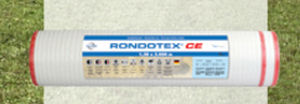
- Horticulture
- Containers & Substrates
- Bale wrap sheeting
- RKW Agri GmbH & Co. KG

- Products
- Catalogs
- News & Trends
- Exhibitions
Silage sheeting Polydress® O2UV-resistanttransparentwhite

Add to favorites
Compare this product
fo_shop_gate_exact_title
Characteristics
- Application
- silage
- Other characteristics
- UV-resistant, transparent, white, black
Description
Greater work efficiency
With Polydress® O2 BARRIER 2IN1, the underlay film used for coverage is attached to the silage film. This enables you to cover a silo in just one working step. This means that your work effort will be significantly less than with traditional silage films.
Independent film separation
Polydress® O2 BARRIER 2IN1 already attaches to the silage while it is being covered. In absorbing moisture from the environment, the underlay film separates itself independently from the silage film after a few days, nestling on the surface of the silage.
Excellent silage quality
The special barrier characteristics of the polyamide underlay film, including an oxygen barrier that has been improved by a factor of six to ten, prevent the entry of oxygen into the feedstock. This leads to reduced fermentation losses and minimal mold formation, ensuring higher-quality silage.
Good accessibility
Although the film combination is only half as thick as a conventional cover consisting of two separate films, one can walk on Polydress® O2 BARRIER 2IN1 without hesitation. For the absorbed moisture increases the strength, elongation and puncture resistance of the underlay film.
Secure sustainability
The separation of the two materials in use supports a sustainable recycling concept. As 40% less raw material is required for the production of Polydress® O2 BARRIER 2IN1, as well as 50% less packaging materials, the film also makes a significant contribution to environmental protection, while also reducing disposal costs.
VIDEO
Catalogs
No catalogs are available for this product.
See all of RKW Agri GmbH & Co. KG‘s catalogsExhibitions
Meet this supplier at the following exhibition(s):

Other RKW Agri GmbH & Co. KG products
Agricultural Films, Nets & Construction Films
*Prices are pre-tax. They exclude delivery charges and customs duties and do not include additional charges for installation or activation options. Prices are indicative only and may vary by country, with changes to the cost of raw materials and exchange rates.
















